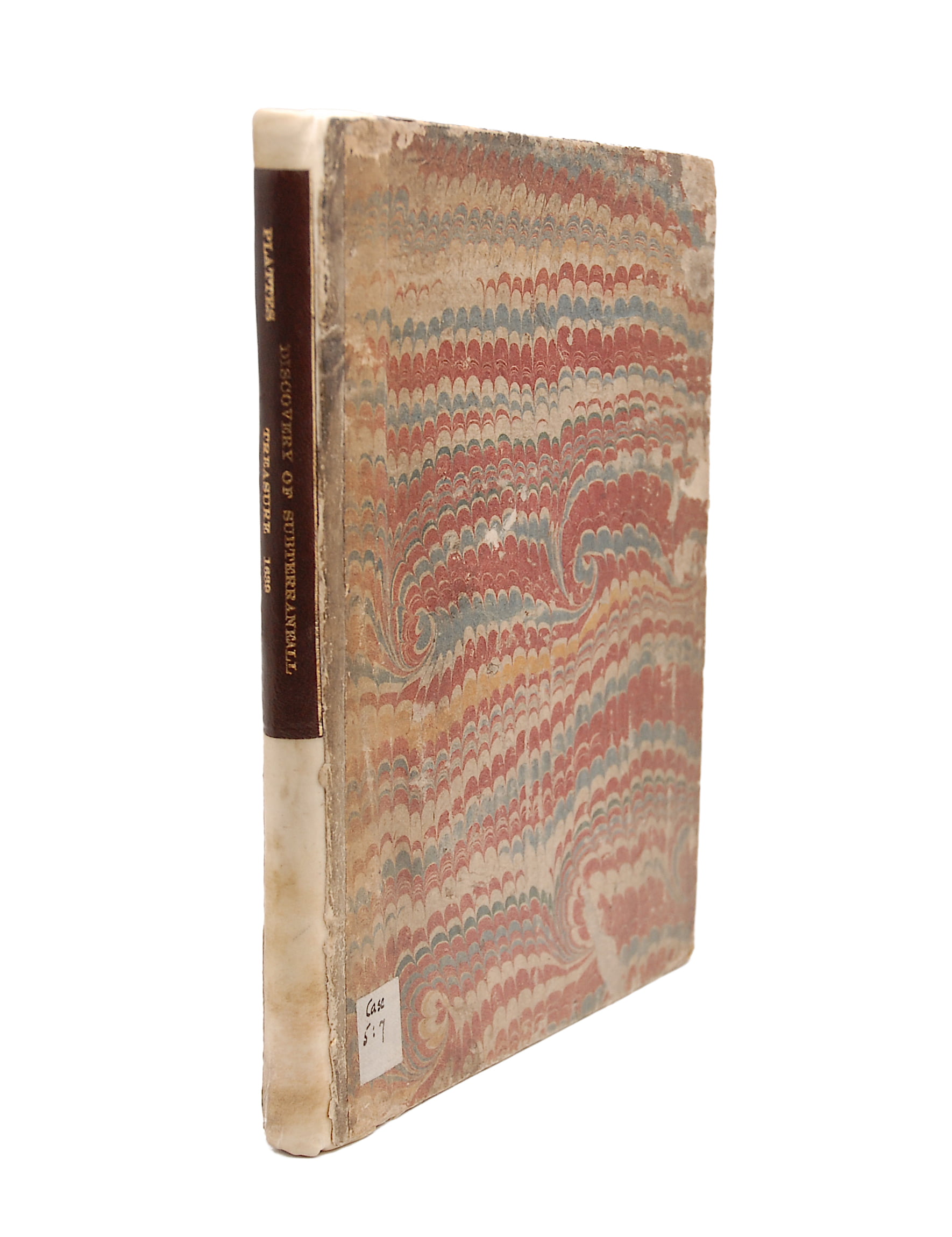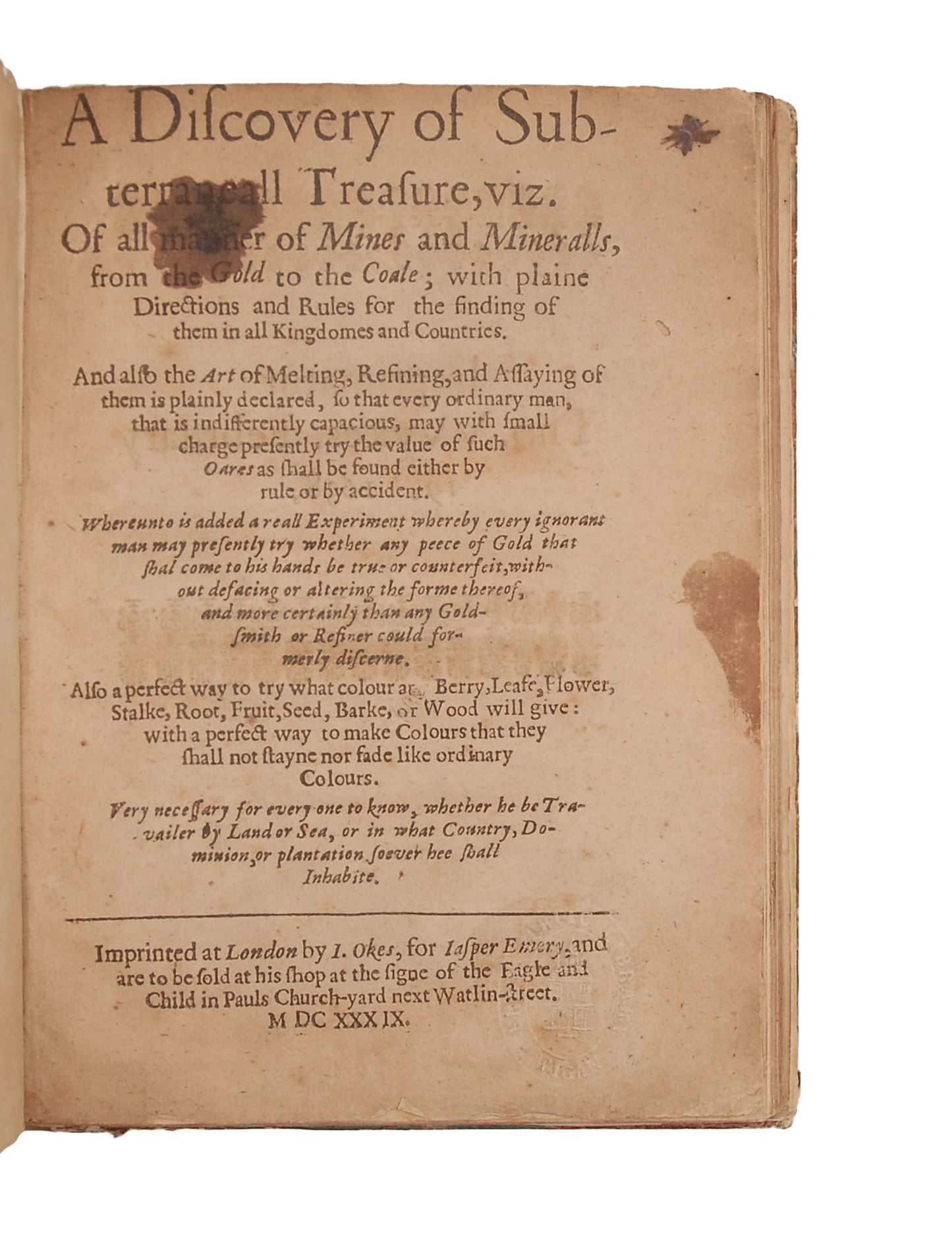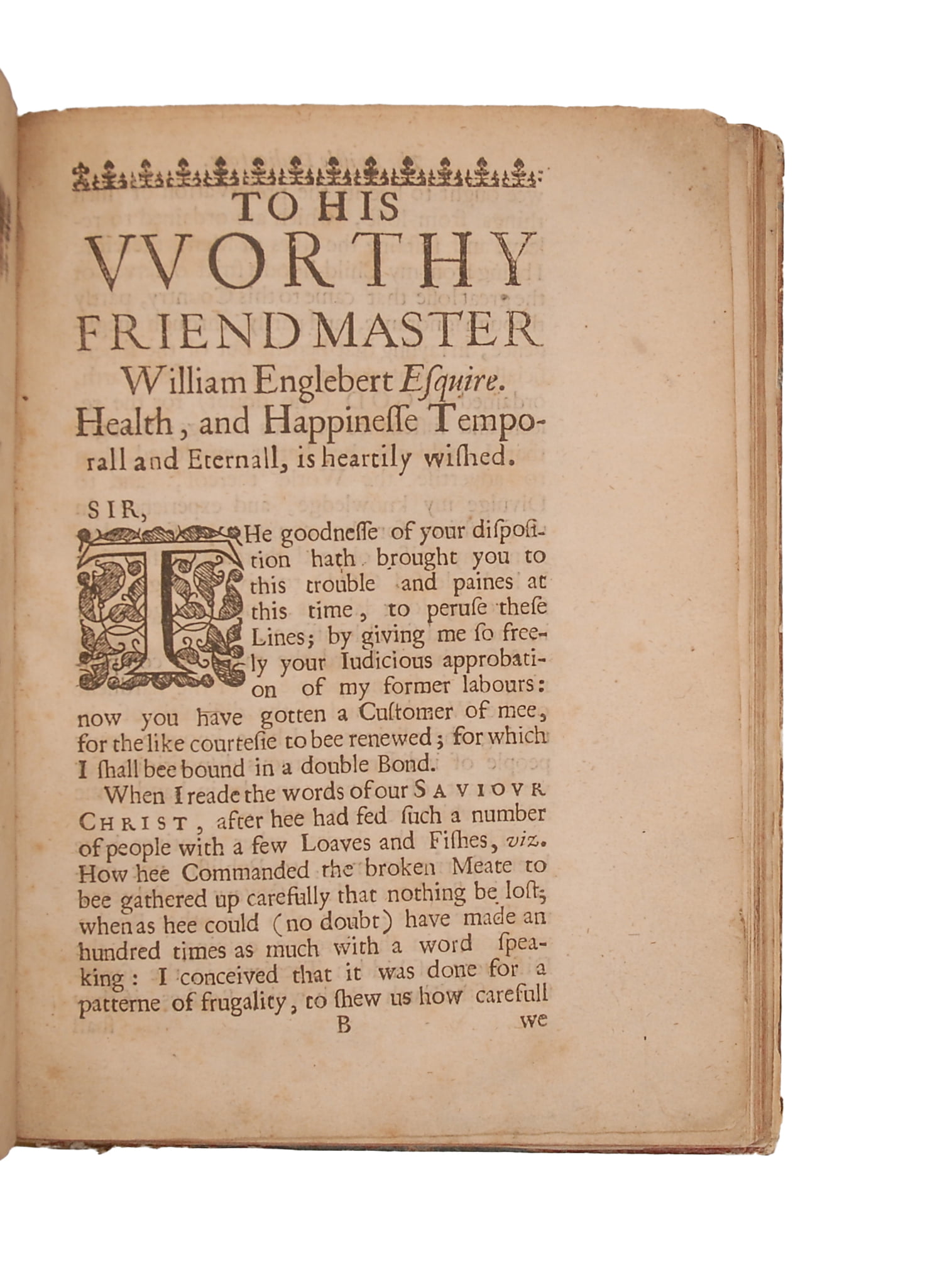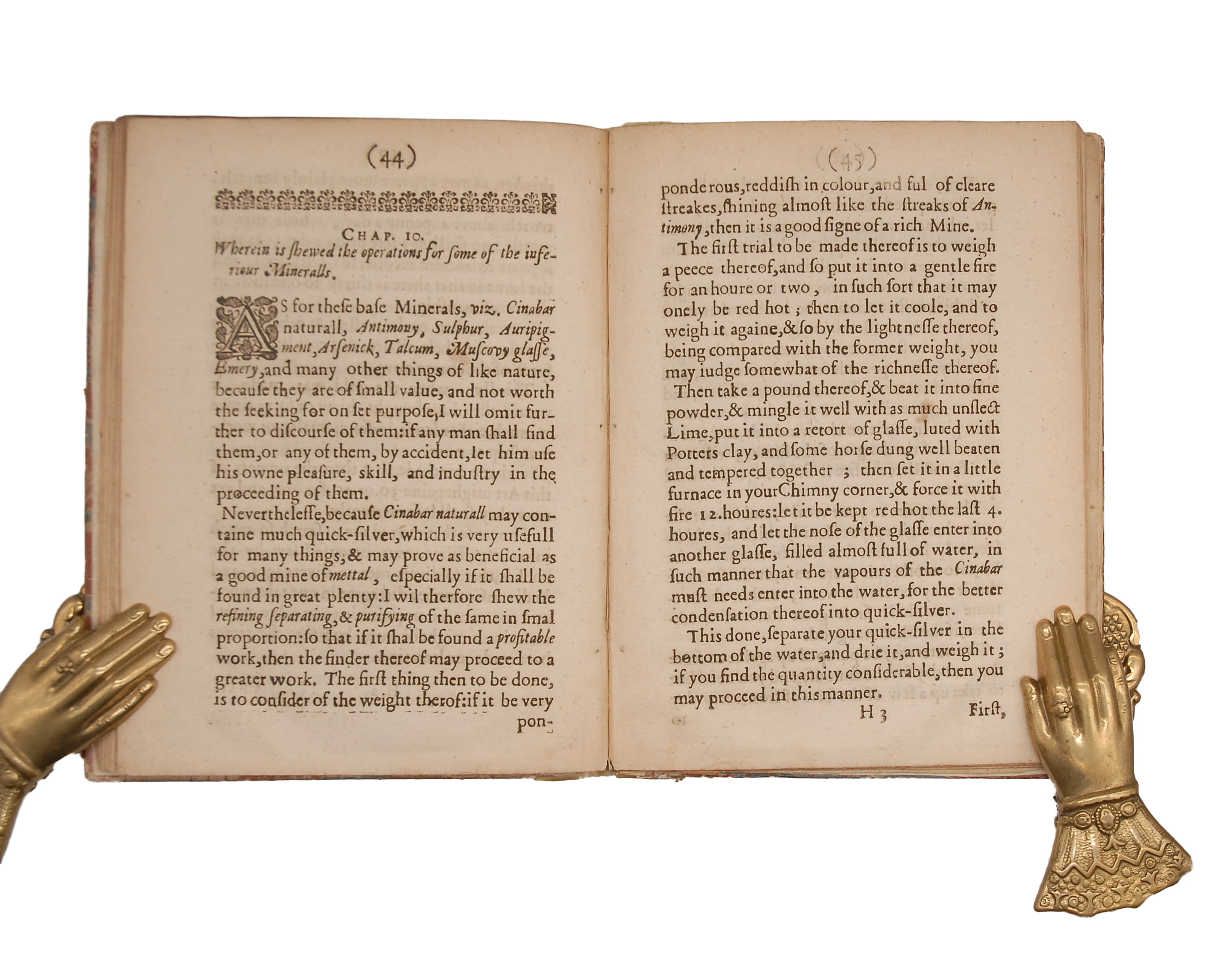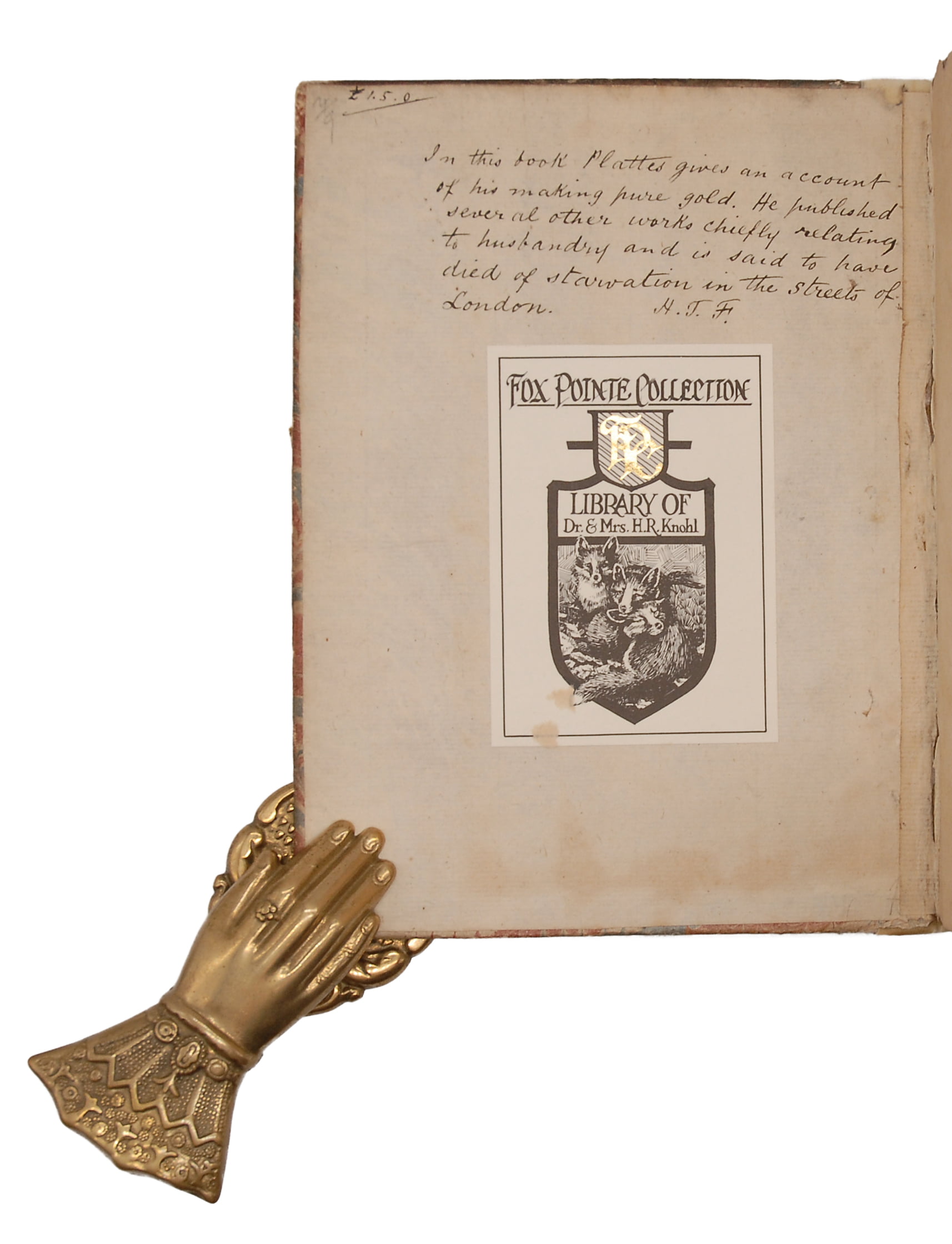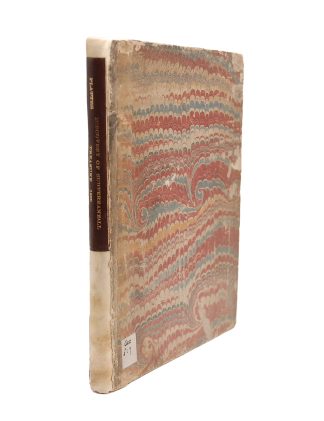PLATTES, Gabriel
MINES, MINERALS AND AMERICA
A discovery of subterraneall treasure, viz. of all manner of mines and mineralls, from the gold to the coale.… And also the art of melting, refining, and assaying of them is plainly declared …Also a perfect way to try what colour any berry, leafe, flower, stalke, root, fruit, seed, barke, or wood will give..
London, by I. Okes, for Iasper Emery, 1639£9,500.00
FIRST EDITION. 4to. pp. [x], 60. [A]², B-I , K², without first blank. Roman letter, some Italic. Woodcut initials typographical ornaments, blind stamps of the ‘Free Public Library, Wigan’ on first and last leaves, bookplate of the Fox Pointe Collection on pastedown, note on the text signed H.J.F. in early C20th hand above, with price £1.5.0 above. Title and last leaf browned and a little dusty with ink splash, age yellowing, some minor spotting. A good copy in 18th century marbled boards, rebacked in vellum, corners worn, a little rubbed.
Rare first edition of this most interesting work on mining and the discovery of minerals with a large section section on the arts of dyeing and fixing colours. It gives directions for ‘finding’ metals and minerals, for ‘melting, refining and essaying them’, and not only how to test gold but how to make it. Unfortunately, this was at greater cost than its value and of so little benefit to its discoverer that Plattes is ‘said to have dropped down dead in the London streets for want of food’ (Lowndes). The Discovery also included some “interesting notices of the gold and silver mines in Peru, New England, Virginia, the Bermudas, and other parts of America”. Sabin. “Very little is known about Gabriel Plattes; he was probably born at the beginning of the century. There is little evidence regarding Plattes’ career in the period preceding his association with the Hartlib Circle. He seems to have been William Engelbert’s assistant, to whom he dedicated his first two books: ‘A Discovery of Subterraneall Treasure’, .. and ‘A Discovery of Infinite Treasure, hidden since the World’s Beginning’ both of them published in 1639. These two books were designed to be complementary .. The ‘scientific’ and technological sections were interspersed with remarks about ethical and economic issues, pointing to a religious obligation which Plattes believed that people like him had to nourish in themselves and to disseminate it to the widest public in order to contribute to the improvement of the estate of the nation. These first two books published by Plattes were famous and highly appreciated in England and abroad, Marin Mersenne even expressing his intention to translate Plattes’ books in French. The main aim of the books was to construct solidarity as both the instrument and the goal of a program of amelioration. Gabriel Plattes’ name was associated with two of the most active personalities that worked in London at that time: the mathematician John Pell and the agricultural improver Richard Weston.Webster claimed that it was due to the association with John Pell, a promoter of Baconian experimental science, that Plattes changed his style and became more of an adept of the ‘experimental’ way.” Oana Matei. ‘Husbanding Creation and the Technology of Amelioration in the Workes of Gabriel Plattes.’
Plattes makes references to the lodestone and discusses the new plantations in New England, Virginia, Bermudas, and the mines in Peru but it is perhaps scientifically most interesting as the first English work to describe the process of separating silver and gold by nitric acid. There are chapters on the origins of mountains and minerals, the smelting and refining of lead, tin, iron, copper, and silver. An entire chapter is dedicated to gold also describing a means’ of detecting counterfeit gold, with the following chapter on its alchemical production.The final chapter is most interesting for its discussion of making dyes from vegetable sources and giving various recipes for fixing colours. Plattes is said to have died in extreme poverty He left his unpublished papers to his friend Samuel Hartlib, who later published the utopian work the ‘Description of the Famous Kingdome of Macaria’, which, though is often attributed to Samuel Hartlib, under whose name it was published, is now recognised as Plattes work.
ESTC S100866. STC 20000. Sabin 63360 “interesting notices of the gold and silver mines in Peru, New England, Virginia, the Bermudas, and other parts of America” Ferguson Secrets I p 17. Ward and Carozzi 1792. Lowndes III, 1880. Alden 639/94.In stock


